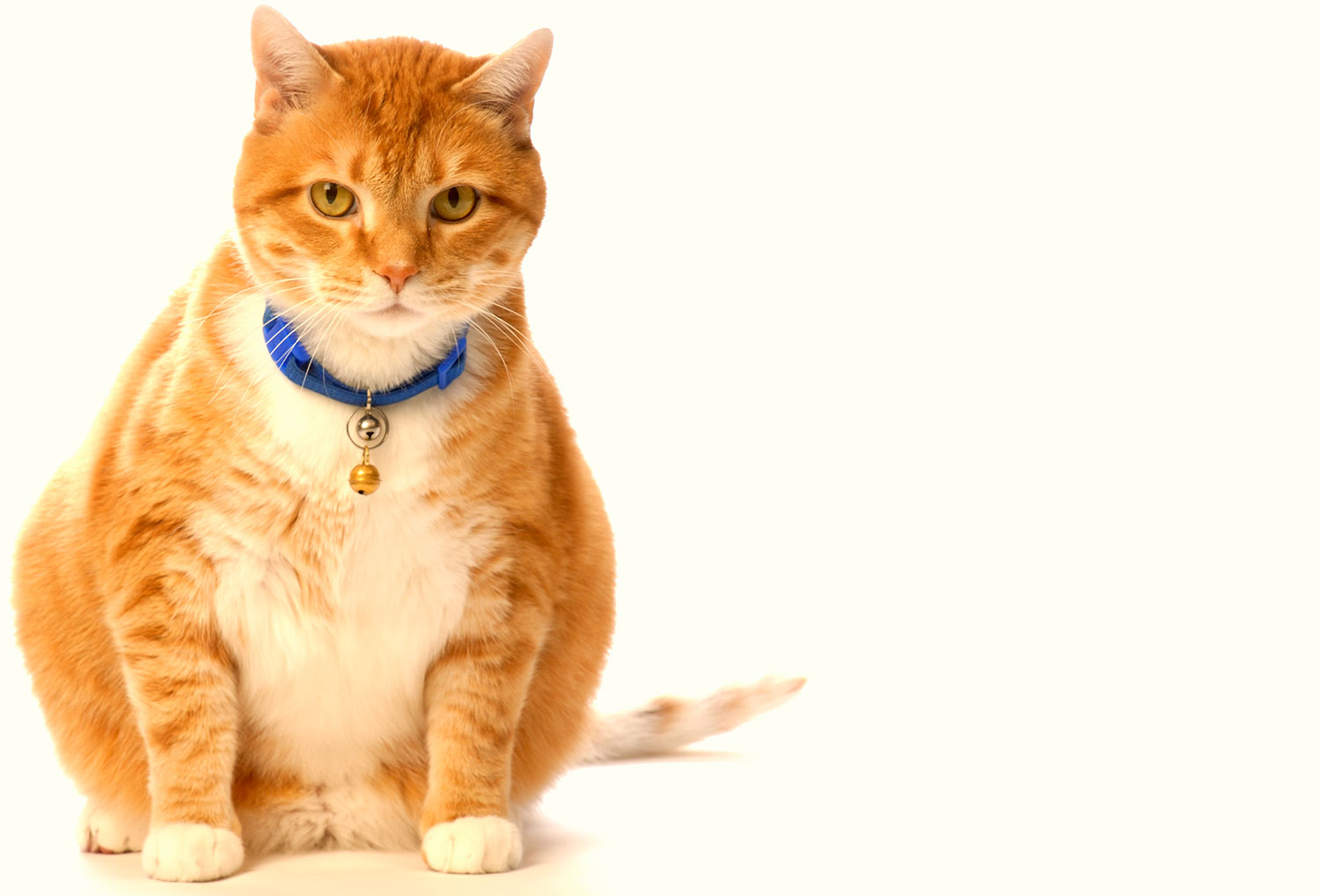Is my pet overweight?

Obesity is a growing trend that—unfortunately—is sweeping through many species, cats and dogs included. According to the Association for Pet Obesity Prevention surveys, the number of overweight pets has been growing as steadily as the number on the scale over the past decade. The most recent survey from 2022 classifies 59% of dogs and 61% of cats as overweight or obese, with one-third of pet owners believing their hefty pets are at an ideal weight.
With such a high prevalence of pet obesity—and the large number of pet owners not recognizing the problem—knowing how to evaluate your pet’s weight is important. Learn how you can tell if your four-legged friend is more fat than fur, and how you can help your pet maintain an ideal weight to add years to their life.
How to tell if your pet is overweight
Determining if your pet is overweight can be challenging, especially if they have thick fur or a naturally stocky build, but the following clues may indicate your pet weighs too much:
- Visible weight gain — The most apparent sign of obesity in pets is a visible increase in body fat. Compare year-old photos of your pet with how they currently look. If they have changed significantly, your furry friend likely needs help losing weight.
- Difficulty moving — Overweight pets may have trouble moving around comfortably, so they appear lethargic, are reluctant to play and exercise, or struggle to climb stairs or jump on furniture.
- Breathing problems — Excess weight can put pressure on your pet's respiratory system, leading to wheezing, panting, or difficulty breathing, especially during physical activity.
- Poor coat quality — Overweight pets can struggle to properly groom themselves, leading to a dull, unkempt coat. Skin fold problems can also worsen in a too-heavy pet and result in more frequent skin infections.
The best way to tell if your pet is overweight is to evaluate their body condition. While a number on the scale can be useful when helping your pet reach and maintain a healthy weight, knowing their ideal body condition is more important. When a pet is at their ideal body condition, you should be able to easily feel their ribs without an excess fat covering, their waistline should be clearly discernible, and their abdomen should tuck up into their pelvis.
How to help your pet maintain an ideal weight
By helping your pet reach and maintain an ideal weight, you will not only extend their lifespan but also improve their overall quality of life and happiness. The following tactics can help your pet achieve a healthy weight:
- Measure food portions — While the feeding guidelines on your pet’s food bag are a good place to start, remember that they are only guidelines. Instead, calculate your pet’s caloric needs, divide that amount into two or three meals, and accurately measure each portion.
- Adjust their diet — Determine whether your pet’s diet is appropriate for their life stage, activity level, and health needs. If you’re still feeding your 4-year-old Labrador puppy food, it’s time to switch to an age-appropriate diet.
- Evaluate treats — If you can’t say no to your pet’s masterful begging, swap out fat- and calorie-laden treats for healthier alternatives. Fresh or canned veggies and lean meats are excellent healthy treats for pets—and such snacks mean you can treat them more without going over their 10% daily calorie allotment.
- Ditch the dish — If you have a gravity self-feeder for your pet, toss it. While a bowl is acceptable if you carefully portion out meals, a puzzle feeder is a better option. Food puzzles encourage your pet to work for their meal and help them burn the calories they consume while they are mentally stimulated.
- Increase physical activity — Most pets are given too few opportunities for appropriate physical activity that fulfills their needs for exercise and play. Walk, play, or provide interactive toys to ensure your pet receives plenty of daily exercise. Gradually increase each session’s duration and intensity to avoid overexertion.
- Reward without food — Many pet owners equate food with love to show their four-legged companions affection. However, all that love in the form of tasty treats can harm your pet. Instead, offer affection through petting, praise, grooming, and playtime.
Aim for a slow, steady decrease in your pet’s weight. A dog can safely lose 1% to 3% of their body weight per month, while a cat can lose 0.5% to 2% per month.
What to do if your pet is not losing weight
Despite your best efforts, your pet’s diet and exercise plan may not be as effective as you would like. If your four-legged friend is not shedding their extra pounds as easily as their winter coat, an underlying health condition may be making their weight loss challenging. Medical problems that interfere with weight loss in pets include:
- Hypothyroidism
- Cushing’s disease
- Osteoarthritis
- Chronic use of certain medications (e.g., corticosteroids)
Your veterinarian not only can diagnose an endocrine disorder or other health problem that is thwarting your pet’s weight loss efforts, but also provide nutritional and activity recommendations. When you set out to help your pet achieve their ideal weight, enlist your AAHA-accredited veterinarian’s help for safe and healthy weight loss.



